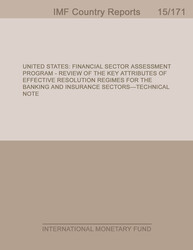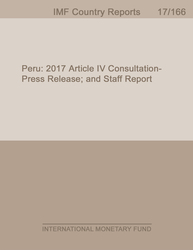
United States: Financial Sector Assessment Program-Review of the Key Attributes of Effective Resolution Regimes for the Banking and Insurance Sectors-Technical Note
EXECUTIVE SUMMARY AND KEY FINDINGS The United States' resolution regime for financial institutions has been significantly enhanced since the financial crisis. The Orderly Liquidation Authority (OLA), introduced in 2010 as part of the Dodd-Frank Act (DFA), provides the authorities with a robust framework for facilitating the resolution of most financial institutions that have the potential to cause severe systemic disruption and/or expose taxpayers to loss in the event of their failure. In particular, OLA is intended as a credible alternative to, and a substitute for, ordinary bankruptcy proceedings that can be disruptive from a financial stability perspective. Over the past several years, the U.S. authorities have undertaken significant efforts to develop the capability to deploy the OLA, if and when needed, to safeguard financial stability. Of particular importance is the development of the so-called single point of entry (SPE) strategy, designed to take advantage of most systemically important financial institutions in the United States being organized under a holding company structure. Under the SPE strategy, the FDIC would resolve the financial group by initiating an OLA receivership at the holding company level. The strategy allows for a recapitalization of the group, with the shareholders and creditors of the failed holding company absorbing its losses. The SPE strategy's key benefit lies in the avoidance of the need for separate resolution proceedings for the group's operating companies (e.g., insured depository institutions (IDIs), insurance companies), which would otherwise add significant complexities. While the OLA provides the FDIC with flexibility to also apply alternative MPE resolution strategies, the benefits of SPE may, in many circumstances, make it more advantageous. The feasibility of an SPE strategy hinges on a number of factors, including the sufficiency of 'bail-inable' debt at the level of the holding company and internally within the group. This precondition to an SPE strategy may prove difficult for complex insurance groups; as such, an MPE may be the more appropriate strategy for insurance companies in some circumstances. Furthermore, reforms to address structural and organizational impediments to orderly resolution are required. With respect to the banking sector, the resolution regime as set out in OLA and the Federal Deposit Insurance (FDI) Act is in broad conformity with the Financial Stability Board's (FSB) Key Attributes of Effective Resolution Regimes for Financial Institutions (KA). The regime lays out a comprehensive framework through which the FDIC, through an administrative process, can exercise a broad range of resolution powers to deal with a failing systemically important bank or bank holding company (BHC), while protecting financial stability. The regime reflects the deeprooted experience of the FDIC in dealing with distressed banks—experience that has placed the U.S. authorities at the forefront of international policymaking in relation to matters pertaining to bank resolution. However, at present the U.S. resolution regime does not fully align with the FSB requirements for cross-border cooperation.
Publication date: July 2015
ISBN: 9781513544045
$18.00
Add to Cart by clicking price of the language and format you'd like to purchase
Available Languages and Formats
| English |
Prices in red indicate formats that are not yet available but are forthcoming.
Topics covered in this book
This title contains information about the following subjects.
Click on a subject if you would like to see other titles with the same subjects.
Money and Monetary Policy , International - Economics , Public Policy ,
Also of interest
Summary
Copyright © 2010 - 2024
Powered by:
AIDC



